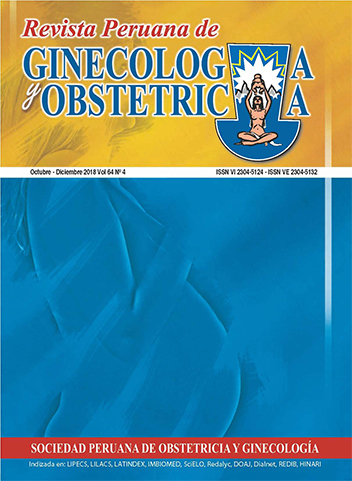Stroke in HELLP syndrome-associated eclampsia
DOI:
https://doi.org/10.31403/rpgo.v64i2123Abstract
Introduction: Eclampsia (E) and HELLP syndrome (H) are two complications of preeclampsia that increase maternal morbidity and mortality. The main complication and the main cause of death of this EH / HE association is the hemorrhagic cerebrovascular disease (HCD). Objectives: To determine differences between women with EH / HE who presented HCD and those who did not. To define the types of HCD in women with EH / HE. Design: Cross-sectional comparative study. Patients: Cases of EH / HE at the Hospital Regional Docente de Cajamarca, Peru, 2015. Interventions: Patients with EH / HE were divided into two groups: those without HCD and those with HCD. SPSS 20.0 was used. The comparison of groups was done with Mann Whitney U and chi square tests. Significant differences were when p <0.05. Results: There were 23 women with EH / HE: 18 (78.3%) without HCD and 5 (21.7%) with HCD. We compared women with EH / HE who had HCD and those who did not. HCD had OR = 4.44 (95% CI 1.19-16.55) p = 0.043 for risk of death, and platelets less than 30 000 had OR = 4.44 (95% CI 1.19-16,55) with p = 0.043 risk for HCD. In addition, the stay in ICU was longer in those with HCD than without HCD. Mortality was 60%; 80% of the HCD had ventricular compromise. There was 66.7% of the patients presented subarachnoid hemorrhage and 66.7%, intraventricular hemorrhage (IVH). In IVH, 100% had lobar compromise of which 66.7% had occipital compromise. Conclusions: Hemorrhagic cerebrovascular disease in women with HELLP syndrome associated
with eclampsia is related to lower platelet levels; this increases the risk of death and prolongs stay in the intensive care unit.
















